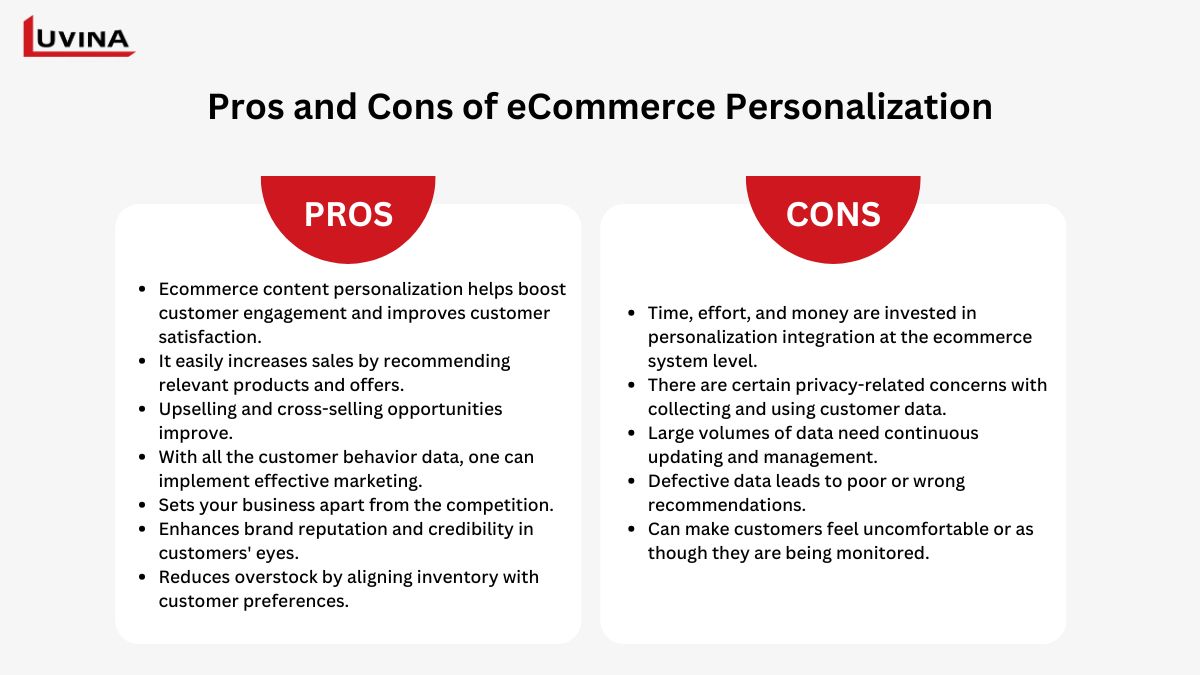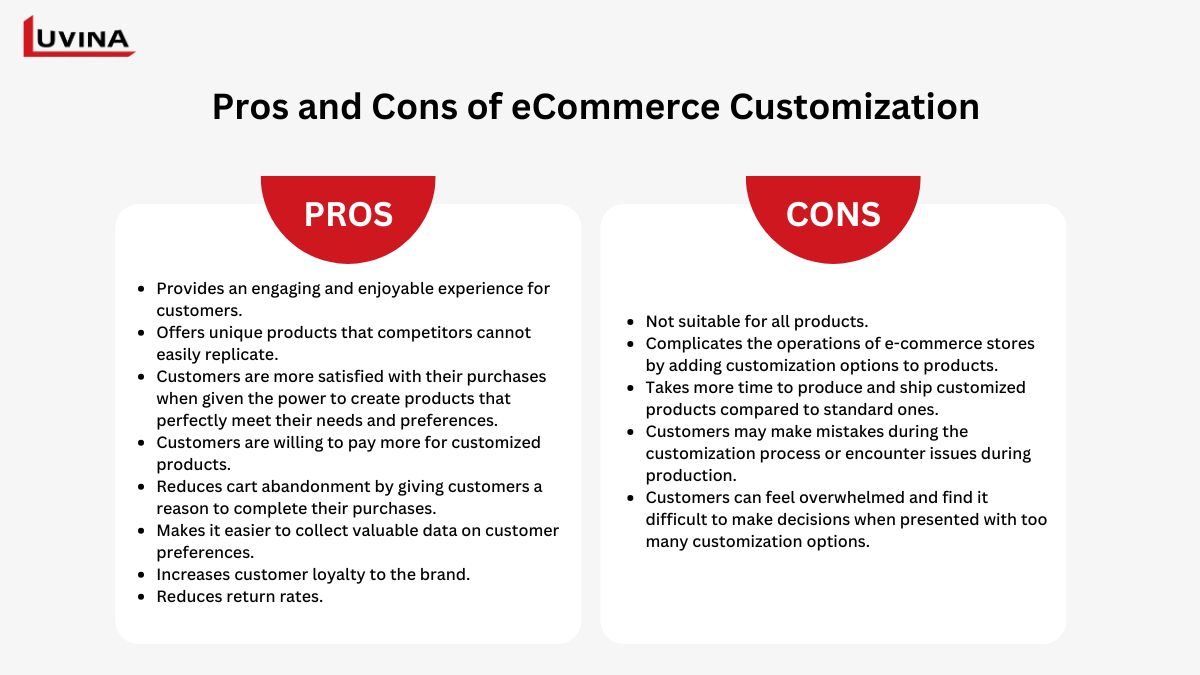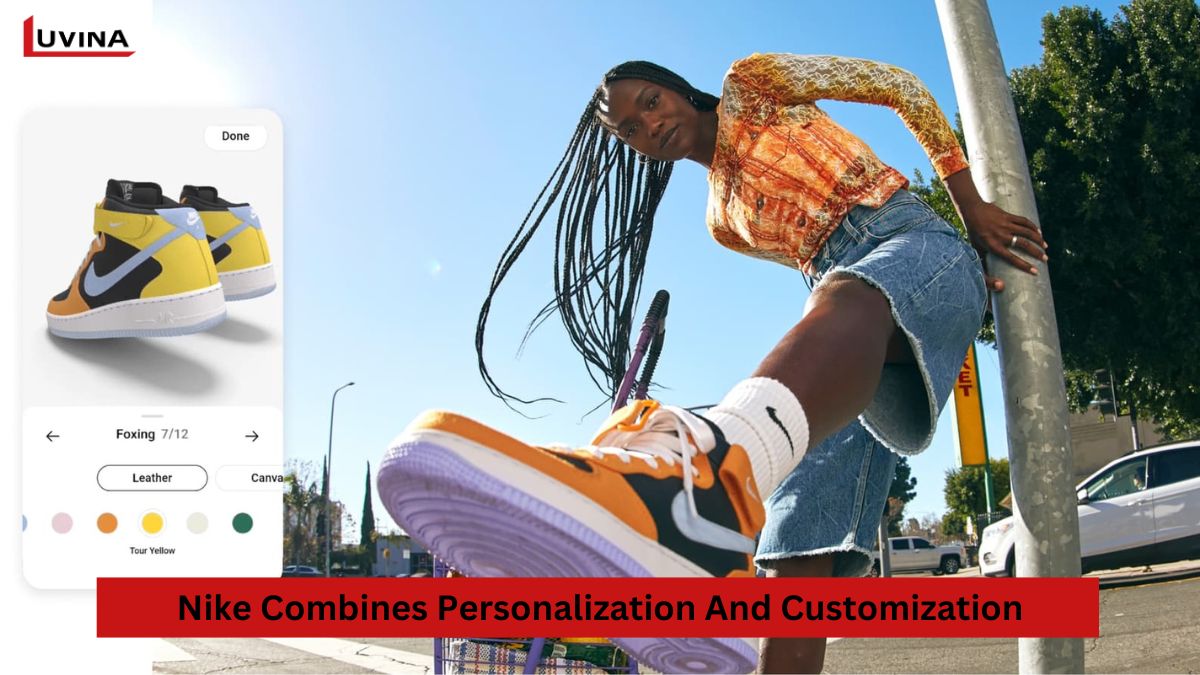In the increasing competitiveness in this e-commerce world, businesses have to seek some avenue of outshining and availing personalized experiences at every digital touchpoint for their customers. Personalization and customization in e-commerce are the keys. Some studies have shown:
- 62% of shoppers believe companies can do a better job of tailoring the customer experience.
- 70% of consumers are willing to spend more with companies that offer a seamless and smooth personalized experience.
- 67% of respondents said they want to receive personalized promotions or offers based on their shopping habits when shopping online (according to an Adobe survey in 2022).
These numbers show the potential opportunities for businesses in personalization and customization in e-commerce. And the first step is understanding the difference between the two concepts.
In the article below, we will help you better understand how personalization and customization in e-commerce work, the basic differences between these two concepts, and suggest the right use cases. If you want to provide a far-beyond shopping experience to your customers, then this article is a must-read!
What is Personalization in E-commerce?
Before seeing how personalization and customization in e-commerce differ from each other, let’s first understand the concept of personalization.. E-commerce personalization (or e-commerce personalization) is a way to improve the shopping experience for customers. Regardless of whether it’s personalization in B2B e-commer.
Specifically, sellers provide content, product recommendations, and offers based on customers’ behavioral preferences and demographic information. The goal is to increase customer satisfaction, boost engagement, and improve conversion rates. On the other hand, personalization for e-commerce also enables customers to make certain modifications to the products or services they are purchasing.

They are involved in product design and configuration by color, adding features, among other aspects, just the way they want. The approach allows e-commerce businesses to extend a sense of ownership and the capability to make products that answer the specific needs and preferences of customers.
To implement personalized commerce, businesses must understand customer needs and preferences. This means they need ways to collect data on the items customers have bought or shown interest in, and then recommend related content or products based on that behavior. The better a business can leverage customer data, the more personalized it can make the customer’s experience, thereby upping sales.
Today, e-commerce personalization is something without which people cannot think of online purchasing because a customer gets used to personalized experiences. This will be a significant strategy to be implemented by an e-commerce store to make it different from others and to retain customers.
1. How Personalization works in eCommerce?
E-commerce personalization is essentially about remembering customers and their preferences. In offline shopping, sales staff typically remember the customer and their likes. But in online shopping, many tools with special mechanisms can do the same.
Presently, many third-party applications and extensions are offering personalization features. They can easily integrate with most of the e-commerce platforms. These apps or extensions will help in gathering information about your visitors and using it to personalize their shopping experiences. E-commerce personalization examples are simply all over the place:
- – E-commerce product personalization: Recommendations of products relevant to individual customers’ preferences and tastes made by previous transactions, browsing history, or demographic data; very often, these personalized suggestions are powered by AI personalization e-commerce tools.
- – Adjusting dynamic pricing based on product availability, customer segments, and other factors.
- – E-commerce content personalization: Allowing customers to modify product descriptions to suit their preferences and needs. For example, customers can choose which information is displayed, such as size, color, or specific product features.
- – Sending notifications to customers when better-matching products become available for their search queries.
- – Automated emails send personalized messages to customers based on segmenting criteria.
These e-commerce personalization examples are considered some of the ways online stores today can personalize the shopping experience to their customers and engage them.
2. Pros and Cons of E-commerce Personalization
It’s undeniable that personalization and customization in e-commerce are effective strategies for businesses to improve customer experience. However, these strategies also come with certain drawbacks. Below are some key pros and cons of e-commerce personalization:

Pros:
- – E-commerce content personalization helps boost customer engagement and improves customer satisfaction.
- – It easily increases sales by recommending relevant products and offers.
- – Upselling and cross-selling opportunities improve.
- – With all the customer behavior data, one can implement effective marketing.
- – Sets your business apart from the competition.
- – Enhances brand reputation and credibility in customers’ eyes.
- – Reduces overstock by aligning inventory with customer preferences.
Cons:
- – Time, effort, and money are invested in personalization integration at the ecommerce system level.
- – There are certain privacy-related concerns with collecting and using customer data.
- – Large volumes of data need continuous updating and management.
- – Defective data leads to poor or wrong recommendations.
- – Can make customers feel uncomfortable or as though they are being monitored.
What is Customization in eCommerce?
Both personalization and customization in e-commerce are methods of enhancing the customer shopping experience in e-commerce, yet the meanings of these terms are not exactly alike.
Customization in e-commerce allows stores to meet specific customer needs and provide a unique shopping experience. This can make a shopping experience different for them. It also makes the identity of e-commerce businesses quite distinct from that of competitors because e-commerce product customization, according to customer trends, is facilitated.
In today’s context, customization in e-commerce is becoming increasingly important as shoppers demand a more tailored and personalized e-commerce experience. Some leading customization features in e-commerce include customizable product pages, personalized product images, and customizable order tracking.
By leveraging these customization features, e-commerce stores can create a unique experience and increase customer retention, ultimately fostering loyalty and repeat business.
1. How Customization Works in eCommerce?
Currently, several types of tools are available for activating customization in e-commerce. Most of the tools deal with three-dimensional factors, mainly: product data, customer options, and design elements. Here are a few examples of customization in e-commerce:
- – Product customization: Customers might have been allowed to design products with engravings for initials or custom logos.
- – Image/design upload: The customers can upload images or designs to print on the products
- – Customization of UI: For example, selecting your native language or the layout of the content.
2. Pros and Cons of eCommerce Customization
Similar to e-commerce personalization, customization also has its own set of pros and cons. Here are the specific advantages and disadvantages of customization in e-commerce:

Pros:
- – Provides an engaging and enjoyable experience for customers.
- – Offers unique products that competitors cannot easily replicate.
- – Customers are more satisfied with their purchases when given the power to create products that perfectly meet their needs and preferences.
- – Customers are willing to pay more for customized products.
- – Reduces cart abandonment by giving customers a reason to complete their purchases.
- – Makes it easier to collect valuable data on customer preferences.
- – Increases customer loyalty to the brand.
- – Reduces return rates.
Cons:
- – Not suitable for all products.
- – Complicates the operations of e-commerce stores by adding customization options to products.
- – Takes more time to produce and ship customized products compared to standard ones.
- – Customers may make mistakes during the customization process or encounter issues during production.
- – Customers can feel overwhelmed and find it difficult to make decisions when presented with too many customization options.
Personalization vs Customization: What’s the key Difference?
Both personalization and customization in e-commerce focus on the individual preferences of the customer. However, there are quite several differences between these two concepts along various factors, which include driving elements of the experience and levels of control available to customers. Understanding the distinction between profiling and personalization in e-commerce is essential. Here are some key differences:
| Factor | E-commerce personalization | Customization in e-commerce |
| Control Type | Sellers control the customer’s personalized e-commerce experience. | Customers have full control over adjustments and modifications. |
| Data Source | Relies on user data (purchase history, demographics, browsing history, etc.). | Limited data is required, focusing on some user preferences. |
| Technology | Utilizes recommendation tools and data analytics. | Employs interactive tools for product design, configuration, and 3D/AR viewing. |
| Focus | Concentrates on understanding and addressing individual customer shopping habits and needs. | Pertains to product features and options. |
| Shopper’s Involvement | Customers are passively involved, requiring minimal effort since it relies on data analysis and automated systems. | Customers are actively involved, demanding participation in decisions about product design, features, and specifications. |
| Niche | Applicable to all types of products. | Not suitable for every type of product. |
| Scalability | Easily scalable for a large customer base. | Requires more resources for complex configurations. |
| Benefit | Offers convenience, ease of use, and a sense of control. | Delivers unique products and a sense of ownership. |
| Approach | Utilizes customer data and automated algorithms to deliver relevant content and product recommendations. | Empower customers to actively shape their shopping experience by modifying aspects of products according to their preferences. |
| Scope | Affects the overall user journey by delivering personalized content and recommendations across the platform. | Specific to individual products or services that can be tailored to user preferences. |
By understanding the differences between personalization and customization in e-commerce, businesses can better identify the most suitable strategy to satisfy customers and provide a seamless shopping experience. The created optimization of a personalized e-commerce experience will give your e-store an edge over competitors and make it a place where customer loyalty is created and revisited again and again.
What to Use: Personalization or Customization or Both?
Personalization and customization in e-commerce are strategies that cannot be overlooked if your goal is to enhance the shopping experience for customers. However, a common question among businesses is whether to choose personalization, customization, or to use both. The answer depends on several factors.
When deciding between e-commerce personalization, experts recommend considering both options and evaluating factors such as the type of product, target audience, and business objectives. Both approaches are generally regarded as effective, but personalization for e-commerce is often considered the more cost-effective option compared to customization.
So when should you use personalized commerce and when should you use customization?
Personalization is very effective in creating a personalized e-commerce experience without needing too much active participation from customers. Personalization and customization in e-commerce will be the right choice in the following cases:
- – When a business wants to target a specific customer segment.
- – When a business wants to upsell and cross-sell related products.
- – When you want to create a dynamic and engaging shopping experience.
On the other hand, if your goals are any of the points below, you should use customization:
- – When you want to offer unique and different products.
- – When you want to meet the specific needs of a niche market.
- – When you want to provide a sense of ownership and emotional connection with the product for customers.
Personalization and Customization in E-commerce Examples
Personalization and customization are widely used to bring in the best shopping experiences in the field of e-commerce. There are many personalization and customization in e-commerce examples.
One of the personalized e-commerce examples is the famous music streaming platform Spotify. Their personalized playlists have become very popular with users. On each user’s homepage, Spotify suggests items based on the content that the user has listened to recently or other content they might want to hear. This e-commerce personalization from Spotify makes customers feel like they are using a personal music streaming service, even though the app is used by millions. Spotify’s AI e-commerce personalization not only improves the user experience but also helps users discover new content that is relevant to them.
In addition to examples of individual personalization and customization implementations, there are also many examples of the combination of personalization and customization in e-commerce. One of the best examples is Nike.

Understanding that each customer is unique, Nike uses browsing history and purchase data to suggest e-commerce product personalization on its website. They also provide a strong customization platform for customers to design sneakers according to their own preferences. Specifically, Nike customers can choose colors, and materials, and create a unique pair of shoes for themselves.
Another great example of personalization in e-commerce is The North Face. Another great outdoor clothwear company is The North Face, which makes use of personalization to suggest products to their customers depending on the location and weather conditions. For example, if a customer is in some cold region, he/she will be suggested to buy boots or jackets.
Secondly, just like Nike, this brand also provides a customization program for customers where they can design their jackets. The harmonious combination of personalization and customization in e-commerce has helped The North Face provide a highly tailored and engaging shopping experience for each of its customers.
Summary
Personalization customization in e-commerce will be the key to allowing companies to provide unique and customized experiences to consumers. In such a fast-moving and ever-changing environment, personalization and customization will be very critical for any e-commerce company to maintain sustainability in the digital market and to lead toward long-term sustainable competitive advantages.
If you are looking for a steady IT service company for the implementation of personalization and customization, then Luvina is the perfect choice. Having more than two decades of experience, we assure you of developing your business in digital transformation within an affordable budget and in the shortest time. We have more than 750 talented professionals and developers with experience in mobile app development, web applications, and system development. We also have developed different IT solutions for various projects of different industries all over the world. Luvina is always ready to be your companion on the way to a successful business.
Are you looking to discuss personalization and customization in e-commerce solutions with experts? Contact Luvina today to talk about how to implement these strategies for your e-commerce platform successfully.
Related Posts:









Read More From Us?
Sign up for our newsletter
Read More From Us?
Sign up for our newsletter